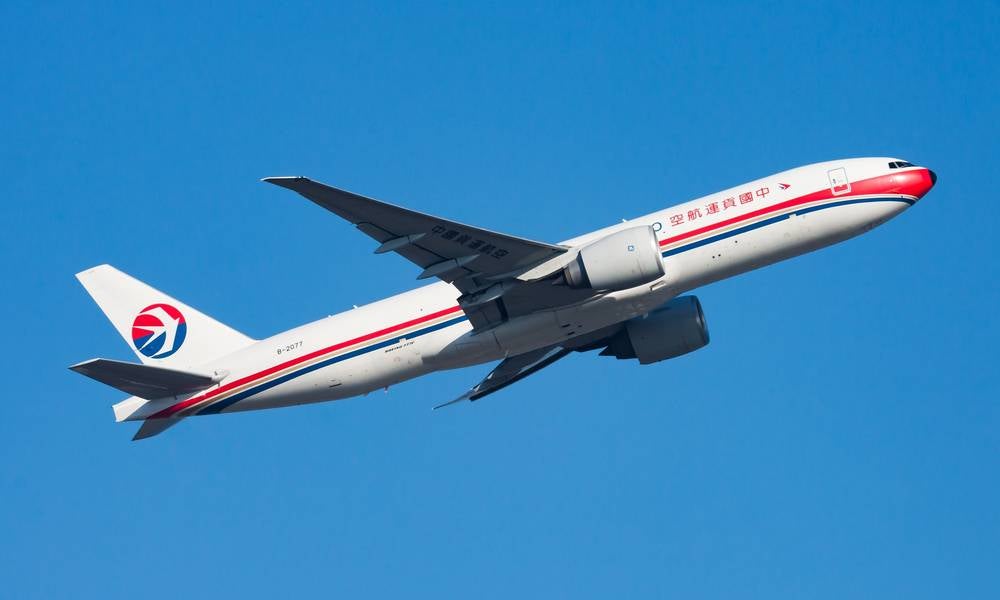Learning from local start-ups: how to innovate in China
There are several ways Western multinationals can leverage the innovation capabilities of China’s start-up ecosystem, write Erik Walenza-Slabe, Yunfei Feng and Mark Greeven
This article is republished with permission from I by IMD, the knowledge platform of IMD Business School. You may access the original article here.
China represents a huge growth market for many companies. Yet many Western multinationals struggle to innovate at the pace of Chinese start-ups. This difficulty is rooted in several practical business considerations. Strategic portfolio decisions are driven by headquarters, while research and product development teams are typically based in the country of a company’s headquarters or in other Western innovation hubs. Localisation of core IP may also be restricted by perceived intellectual property risks. Finally, language barriers and project management approaches between regions constrain the effectiveness of collaboration. As a result, Chinese subsidiaries often lack technical capabilities, the full trust of headquarters, strategic influence, and the ability to communicate efficiently with the wider organisation. These are substantial challenges. But with China as a key growth market for many companies, the decision not to compete through local innovation is not a viable decision.
Yet a Chinese start-up like Youhualin, which means “optimising well” in Chinese, managed to win business from bigger international and Chinese companies by using operations research, artificial intelligence, and big data technology to cut costs and digitalise the supply chain. While a lot of attention is focused on ecosystem giants, notably Alibaba and Tencent, non-Chinese multinationals would do well to keep a close eye on how tech underdogs, like Youhualin, have managed to carve out successful business models by innovating and investing in new technologies.

Focus on fixing problems over selling software
Youhualin’s origins lie in the aviation sector. In 2013, one of China’s leading airline companies, China Eastern Airlines, was looking for a solution to one of the industry’s most challenging problems – pilot scheduling optimisation. China’s airline industry grew rapidly between 2002 and 2012, but suffered a significant shortage of pilots, posing a challenge for airlines trying to fill their schedules.
Although US software and technology companies SABRE and Jeppesen had already entered the Chinese market, their solutions did not fit the requirements of Chinese airlines, and few domestic companies had mastered operations research and optimisation technology. Unable to find a suitable supplier, China Eastern Airlines noticed that many of the professionals in the field were students of Professor Ellis Johnson, dubbed “the father of global aviation optimisation” for his work defining the basic problems and providing basic solutions. The airline approached Johnson, a tenured professor at Georgia Institute of Technology, who had previously worked at IBM for more than 20 years. Together with his PhD student, Xiao Fangfang, who was mainly responsible for the project, they established Decision Making Technology LLC and signed a contract with China Eastern Airlines. The project went well and, seeing the potential market opportunity, Xiao returned to China in 2016 and established Youhualin Information Technology (Shanghai).
Rather than selling software suites, Youhualin focused on optimising processes. Once employees saw other departments’ pain points being resolved, they would ask Youhualin to help them, enabling the company to sign multiple contracts within a single organisation. Following on from its successful work with pilot scheduling optimisation, China Eastern Airlines asked Youhualin to do cabin crew scheduling and air route planning as well. Soon, Youhualin had developed an excellent word-of-mouth reputation within the industry and other airlines approached the company.
Read more: How is FinTech helping digital entrepreneurs in developing communities?
Seek out synergies as you expand industries
Once Youhualin had established itself in the airline sector, it moved onto airports where it could easily adapt its algorithms to optimise everything from the scheduling of aircraft gates, to fuel trucks, baggage handlers, and other ground service personal. The next obvious step was public transportation. Scheduling train drivers follows the same business rules and logic as for scheduling pilots, so the algorithm only required small modifications. The same applied to bus timetables and airline routes. Next, Youhualin ventured into supply chains. Deppon Express, one of China’s top logistics companies, needed to forecast how many items would be delivered from one site to another each day of the week. The more accurate the forecasting the better the company could match transportation capacity, for example, predicting how many trucks, planes, or cubic meters of aircraft warehouse capacity would be needed. Accurate forecasting would allow transportation capacity to be arranged to ensure timely transport at a reduced cost.
For its latest expansion phase, Youhualin has set its sights on intelligent manufacturing, aiming to win clients by using algorithms to help them optimise manufacturers’ production processes by increasing the utilisation of equipment and other resources.

Build technological capability that meets customers’ unmet needs
Youhualin wasn’t a first mover in the logistics sector. Competitors included Cainiao, launched by Alibaba, which provided intelligent scheduling services to logistics companies and had the fastest revenue growth of any other part of Alibaba Group Holding’s vast empire. Two other rapidly growing companies were JD Logistics, owned by Chinese e-commerce giant JD.com, and SF Holding, the Shenzhen-based owner of China’s biggest courier firm, SF Express. So how did Youhualin stand out in this relatively crowded field?
Despite its small size, Youhualin is a technological leader with more than 40 software copyrights and seven patent applications, all of which has allowed it to accomplish some functions that other competitors could not. For example, traditional prioritisation or weighting methods did not work for the automatic scheduling of pilots, since there were many constraints to consider. Youhualin’s competitors, which used traditional algorithms, were unable to find solutions or, if they did, it could take a long time – up to eight hours – to generate a result, which was not acceptable for business.
With its intelligent transportation scheduling, Youhualin could handle extremely complicated situations, such as multiple pick-up locations and multiple delivery locations at the same time, and plan transportation routes to achieve the lowest overall cost. This required it to consider road congestion and the specific business restrictions of stores (for example, no deliveries before or after a certain time), among other things. The transportation plan had to satisfy multiple goals simultaneously – such as using as few vehicles as possible, maximizing the load rate of each vehicle, making the route as short as possible, and achieving the lowest possible overall freight cost. Although these kinds of demands are common in business, from the perspective of the algorithms it was not that simple. No supplier in the market had been able to provide a solution before Youhualin.
Read more: Inside the digital transformation of China's Terracotta Warrior army
A clear understanding of its customers’ needs and building the technological capability to address them has helped Youhualin succeed where others failed. And it has paid off commercially. Since it was founded in 2016, Youhualin’s revenues have grown more than 100 per cent each year, and the trend is continuing.
So, how can multinationals learn from and engage with Chinese start-ups, like Youhualin, to accelerate the pace of innovation? Here we outline three approaches. None is a silver bullet, but each has its role in an innovator’s toolkit.
Co-innovate with a technical start-up
The most strategic way to leverage the innovation capabilities of China’s start-up ecosystem is to co-innovate with a technical start-up to build or enhance a solution. The logic of co-innovation is simple. Corporates possess technical assets, domain know-how, distribution, and credibility, while local start-ups have technical competence, proximity to end-users, and the ability to build and test solutions quickly. The collaboration process typically is initiated by the corporate partner and follows a four-step process: frame the problem, identify a relevant partner, build and validate the solution, execute go-to-market. As with any close partnership, the risk lies in determining the roles and ownership of intellectual property and business results. For example, a corporate might collaborate with Youhualin to develop an optimisation algorithm to enhance a new offering, but ownership of the algorithm and the resulting business should be clearly defined at the outset.

Outsourcing
Co-innovation is most suitable when there is significant uncertainty about the business and technical feasibility of the solution. Both parties share risk and upside. In cases where the business opportunity and technical requirements are well understood, outsourcing directly can make more sense. Start-ups are a viable alternative to agencies for technical development support. They possess technical capabilities and the ability to build products with urgency. In an outsourcing model, the start-up is compensated financially, and IP is owned by the corporate. However, unlike agencies, start-ups are not motivated purely by financial compensation. There must be an underlying strategic interest, for example incorporating a component of the start-up’s core technology in the final product or providing the start-up with a case study that provides them with credibility with their customers and investors.
Invest in start-ups
The final way to benefit from China’s innovative start-ups is to benchmark their solutions and business models. This is not a collaborative approach, but it can be a practical fast-follower strategy. Start-ups are naturally more agile and less risk-averse than corporates. It is therefore not surprising that they are often first to market with new business models. A fast-follower model can be effective for corporates since their market access and financial resources enable them to rapidly scale a proven model.
Read more: Innovation set to be biggest challenge for small businesses in 2022
Yet timing is critical. An A- or B-series venture-backed start-up lacks the capital to scale and may also be invested in by the corporate at a reasonable valuation. By the time the start-up is approaching an IPO, it may have sufficient capital and market know-how to be difficult to outcompete, and it will certainly be an expensive investment or acquisition target.
We are entering an era of localisation for multinationals in China. Selling products designed for other markets is no longer a winning strategy. Yet organisational dynamics will continue to limit the extent to which many companies localise product development capabilities in the near term. Monitoring and engaging with Chinese start-ups is a tactic that foreign companies can use to reduce the localisation gap and increase their speed to market.
Erik Walenza-Slabe is CEO of IoT ONE. Over the past five years, he has worked with more than 100 companies in the areas of digital transformation, market entry, competitor benchmarking, innovation scouting, and investment due diligence. Yunfei Feng is a Research Associate at IMD and Mark Greeven is Professor of Innovation and Strategy at IMD. Drawing on a decade of experience in research, teaching and consulting in China, he explores how to organise innovation in a turbulent world.
